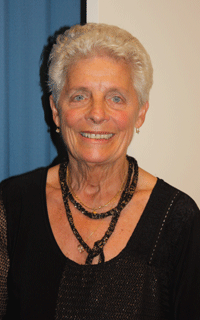
The League of Nations : From Collective Security to Global Rearmament is a United Nations publication translated from the original manuscript in French. It is the work of two Geneva-based journalists who have conducted considerable research on international organizations … the book offers rare historical and anecdotal insights into the League of Nations (1919-1947), the predecessor of international organization to the United Nations. It covers numerous key areas – social, economic and statistics, health and labour – dealt with either directly by the League or indirectly by its specialized agencies.
The book’s Preface is written by Jan Eliasson, prominent Swedish diplomat, former Deputy Secretary-General and Special Envoy of the United Nations and President of the United Nations General Assembly (2005-2006). It makes available a synthesis of documentation outlining the main themes of the League of Nations, from its political origins to its most significant activities. Important personalities appear on its stage confirming the role that was to be fulfilled by international cooperation : in areas of, for instance, refugees, drugs and health. It has three substantive Appendices, an extensive bibliography, listed historical dates, many reference notes and archival references.
It is primarily a book of illustrations. Compared to the present ascendancy of photography, it is the drawings that capture and display the day-to-day workings of the League of Nations : the caricatures and sketches of Derso and Kelen, Petrovic, Erna, Plachte, Oscar Lazar, David Low, Violet Oakley, Rolf Roth, without forgetting the frescos, paintings and furniture that represent the artistic treasures of the Palais des Nations in Geneva, the symbol of the hopes that international society placed in the League of Nations.
Irish statesman Sean Lester was the League’s last Secretary-General, 1940-46 ; isolated and overwhelmed by the cataclysm of the Second World War, he saw the winding up of the League following the entry into force of the Charter of the United Nations on 24 October 1945.
Concept and Legacy
After the Allied victory in November 1918, the Versailles Peace Conference took place in France from January to June 1919 to help prevent and resolve international disputes. It brought together : for the United States – Woodrow Wilson ; for the United Kingdom – David Lloyd George ; for France – Georges Clemenceau ; and for Italy – Vittorio Orlando, as well as some thirty statesmen representing other countries.
The League was established during the plenary session of the Versailles Peace Conference held on 25 January 1919 when the delegates accepted President Wilson’s proposals leading to its creation. Formulated in the fourteenth point it requested the creation of a League of Nations with the words : A general association of nations must be formed under specific covenants for the purpose of affording mutual guarantees of political independence and territorial integrity to great and small States alike. The League’s headquarters were established in Geneva ; in turn the city became the centre of the world politics and the international capital which it remains today.
The proclamation to the people of Geneva on 29 April 1919 made by the Geneva State Council, following the choice of Geneva, as the seat of the League of Nations instead of Brussels in Belgium. Adopting a lyrical tone, the Proclamation calls upon the people of Geneva to “wave the flags” to “let the joyful bells ring” and to “do their duty with dignity and to welcome the illustrious guests who henceforth will be sacrosanct to them.”
In spite of its political failure, the legacy of the League of Nations appears clearly in a number of principles stated by the Charter and in the competencies and experiences developed in the area of technical cooperation : many of the specialized institutions of the United Nations system can in fact be considered as the legacy of the work initiated by the League of Nations.
Ita Marguet
Note : Source : The League of Nations : From Collective Security to Global Rearmament (pp 154), Marit Fosse and John Fox, copyright United Nations 2012, ISBN 978-92-1-101248-4. It is available from the United Nations bookshop, Palais des Nations, Geneva. Sale price CHF 24.00.



